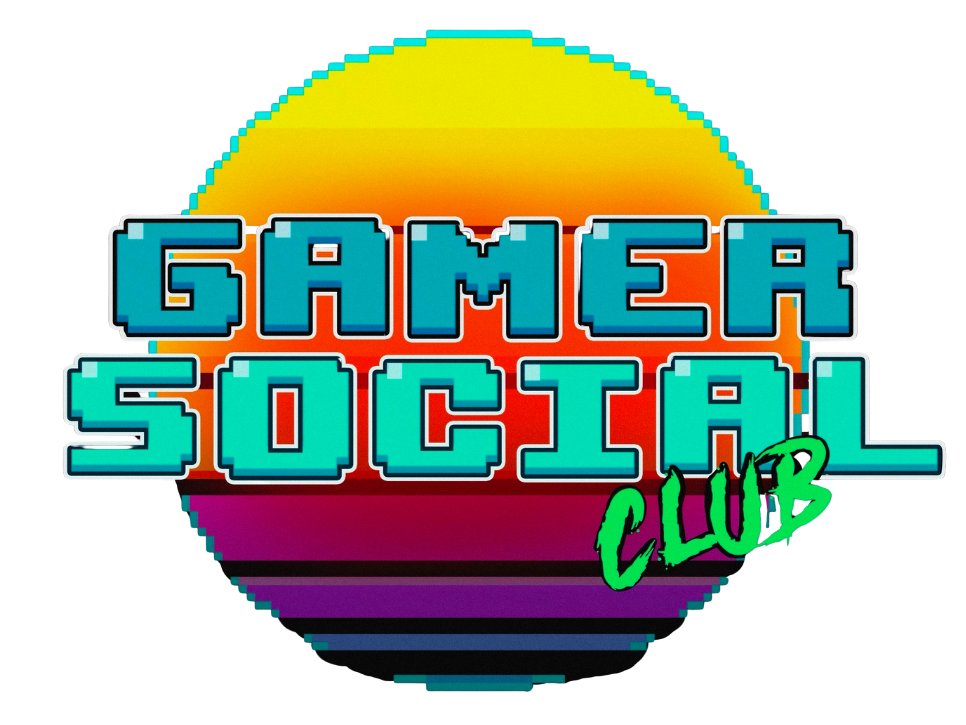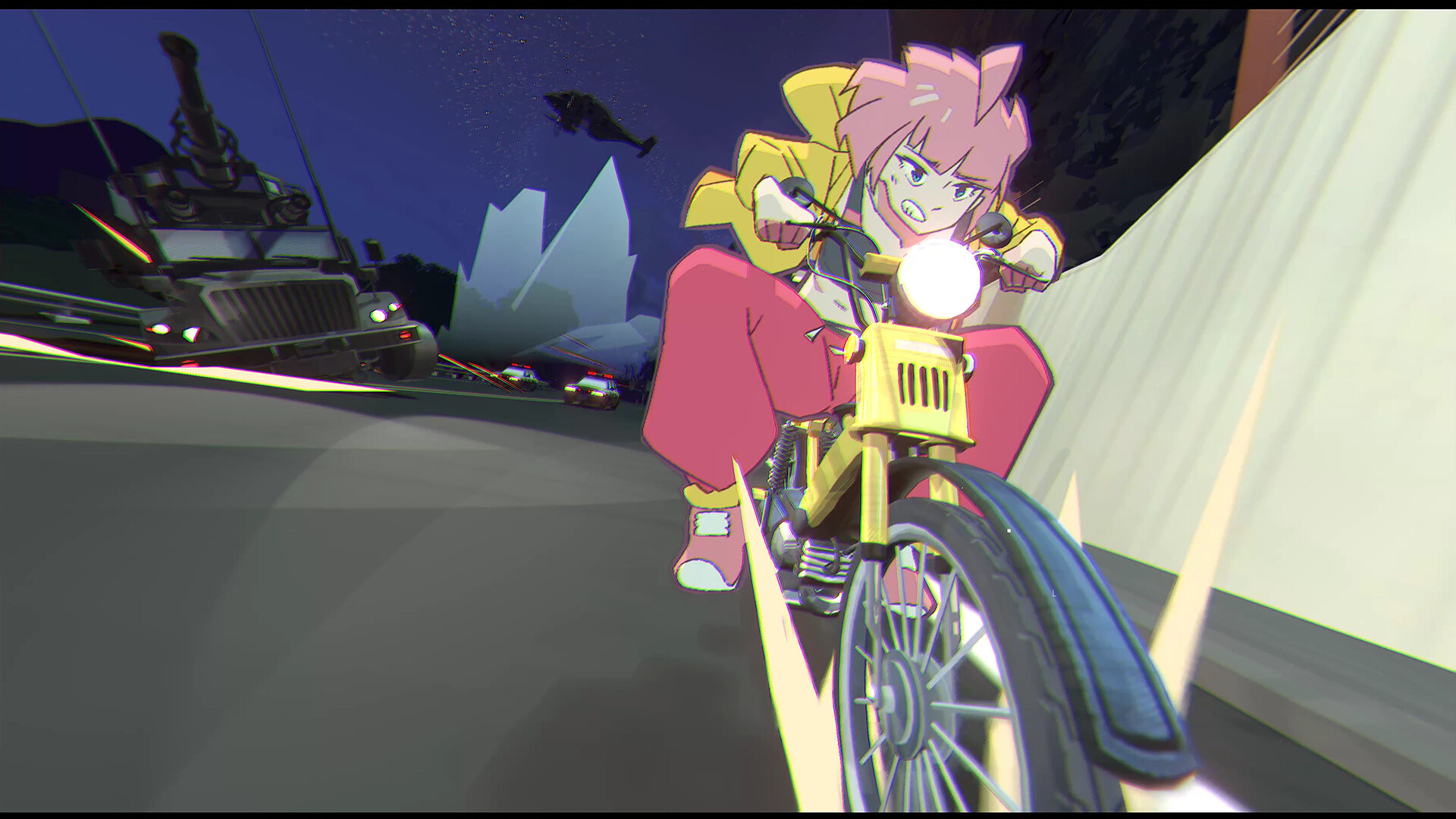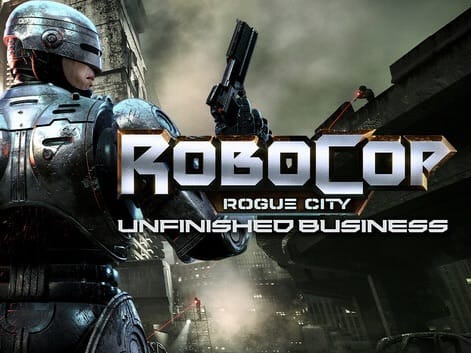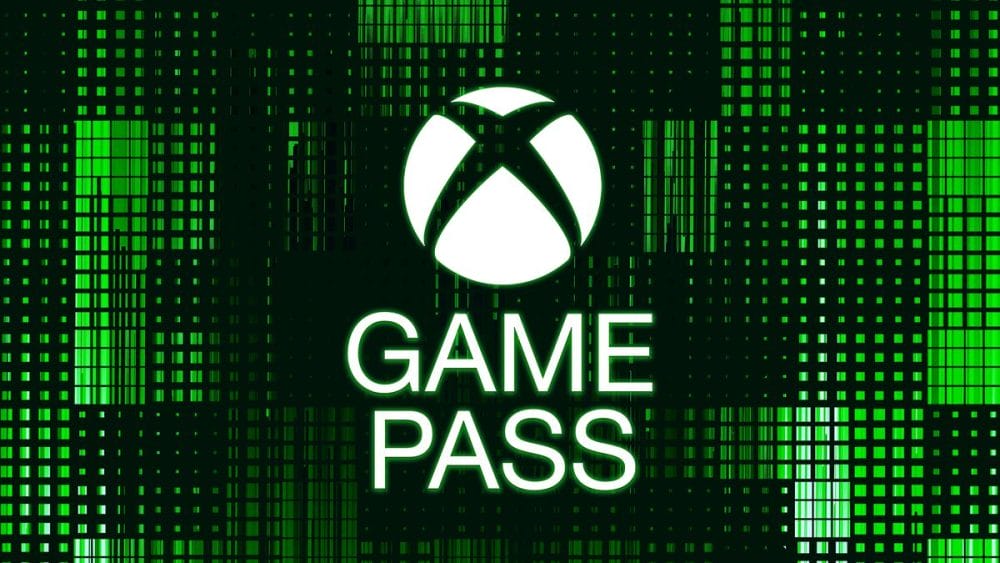Introduction
Let me give you a little insight into how I like to write about videogames. This may seem like a strange way to start this review, but believe me, it will make sense. generally, I do not like to reference other games when describing the one I am reviewing. I don’t like saying “this game is a lot like that game” or ” this game has elements similar to this other game”. This isn’t based on some sense of “best practise”, and I have no problem with people who choose to describe a game in this way. I would just prefer to describe my experience with a video game in my own words, without shortcuts. However, with a game like Nikoderiko: The Magical World, this is frankly unavoidable.
Nikoderiko: The Magical World is the first game from Cyprus based Indie studio Vea Games, and published by Knights Peak. It is a 2.5D platformer, with the option to play solo or co-op. While the characters, world, and narrative of Nikoderiko are all its own, many mechanics in the game are borrowed from well recognised 2D and 2.5D platformers. While some may see this as a negative, going as far as to call plagiarism, I am a firm believer that game mechanics should not be limited to a single IP or copyrighted. Where would we be if developers felt they couldn’t make a first person shooter because id Software popularised it with DOOM? It is clear as day what are Nikoderiko‘s inspirations, and the developers did a great job implementing them all, crafting a quality gameplay experience.

Premise
You play as the titular Nikoderiko (Niko for short) and Luna, two treasure hunting mongooses who love adventure. After plundering a trap-filled temple and recovering the glittering chest within, their prize is stolen by the nefarious Baron Grimbald and his Cobring cronies. What follows is a chase across the many zones of the Magical World to defeat the Baron and recover the duo’s treasure. Like many platformers, it’s a simple set up that provides a solid reason for Niko and Luna’s adventure.
Gameplay
As I said earlier, Nikoderiko: The Magical World is a 2.5 platformer; a 3D game where the gameplay is restricted to a two dimensional plane. While most of the game is played in a side scrolling perspective, it often switches this up, having sections that involve the player moving away from the screen or towards it. This not only keeps the level design fresh and interesting, it goes a decent way to giving the game more depth and variety. Coupled with a camera that smoothly follows the player through each level, swinging round corners and such, Nikoderiko feels larger than most games in the same genre. Each level is linked to one another in a chain through the Magical World, as seen on the world map, with subsequent levels only unlocking once the prior one is beaten.

Niko and Luna have only a few actions, including running, jumping, gliding, sliding and a ground pound, the last two working as attacks. While this did feel a bit limited at times, the game makes up for it with fun level design and a pool of enemies that require different approaches to take down.
As I continue to explain the gameplay, the game’s inspirations will become pretty evident.
In each level there are several different items to collect: fireflies, coins, keys, gemstones, and bottled messages. Fireflies are the most common, with a couple hundred littering each level. Some will be placed along the path, while others will appear after performing a certain action. While their regular appearance is yellow balls of light with wings, some appear purple and reward you with five instead of one. For anyone familiar with the Rayman games this will sound identical to Lums, the main collectible in the classic Ubisoft series. Coins and bottled messages can be found hidden in each level, and sometimes will appear once you have beaten specific enemies or collected a set of fireflies in a short timeframe. There is one large purple gemstone hidden in each level, and they are probably the hardest collectible to find. Lastly, there are keys to collect after completing bonus challenges found in each level. There are two keys to a level, and the challenges will require the player to collect all the stars, or beat all the enemies, under a certain time.
Fireflies, keys, and bottled messages are then used back at the duo’s camp to purchase treasure chests that contain music tracks, concept art, 3D assets, and more. These can be admired and enjoyed in the treasury. The gold coins are used to purchase access to one of three different mounts that the player can use at will in almost any level.

Niko and Luna are not alone on their journey. In some levels there are large crates that can be smashed to unlock one of several different mounts. These include a bat that fires a sonar blast, a warthog that charges through enemies, a large frog that spits bouncing water drops, and a seahorse that shoots a laser. Fans of the Donkey Kong Country games, developed by Rare for Nintendo, will recognise this mechanic.
The similarities to DK and the crew do not stop there. There are several levels which include minecart sections, rolling along the tracks and jumping over gaps. These are found in a fair few other games, but the barrel sequences synonymous with the Donkey Kong Country series have also made their way over to Nikoderiko. There are even objects you can pick up and throw at enemies and obstacles, just like DK himself.
Each of Nikoderiko: The Magical World‘s seven zones ends with a boss battle; another area where the game makes the most of it’s dimensions. Some bosses even have multiple stages, shifting plane and perspective between each stage. No boss battle is the same as another. A personal favourite of mine was taking down Toby the Dragon who would shoot fireballs and send tsunamis from far in the background, whilst I attempted to hit him with my cannons.
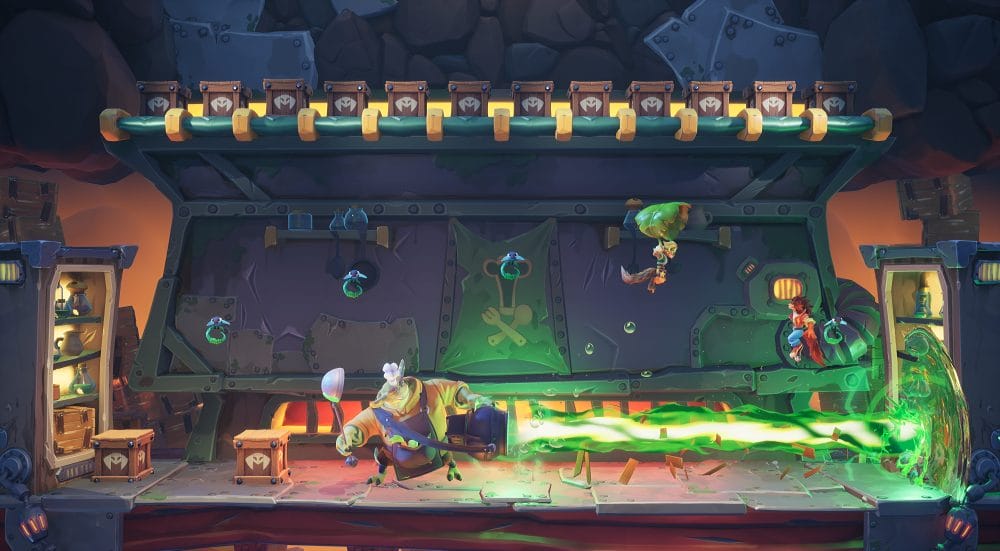
I did experience some issues with hit detection during my playthrough, and there is a lack of UI to relay information to the player. The only way to see which collectibles you have found in each level, you must move to its point on the world map. There is no main menu showing a checklist, and you can’t access this information during the level. Also, I stumbled across how to call in one of your mounts by accident, as there was no explanation given in game on how to do it.
Overall, the gameplay of Nikoderiko: The Magical World feels good and fun, with some challenging sections, and great variety. Even if a lot of it feels familiar.
Writing/Narrative
There are no twists to be found in Nikoderiko: The Magical World, no red herrings, or sudden revelations. Like most classic platformers that have clearly inspired the game, the base premise is all you get. This serves the games well enough, but it would have been nice to see the two protagonists or Baron Grimbald fleshed out a bit more. Niko is clearly a happy-go-lucky, if slightly dim hero, while Luna is the more sensible of the two. All we can ascertain about the Baron is that he wants their treasure, and that’s it. There are a couple of other colourful characters you meet along the way, but they don’t bring anything to the game’s narrative or world building.
Visuals/Art Direction
Nikoderiko: The Magical World is awash with colour, from lush green forests, to excavated caves lit up with flowing lava. Each zone is distinct, and each level within a zone also has its own character. While one level in the Snowlands involved a jaunt among steaming hot springs, the following stage was a mad dash across half constructed bridges and huge blocks of ice. It never felt like I was seeing the same thing twice across any environment, couple that with the diverse level designs and you’ve got a great looking platformer!
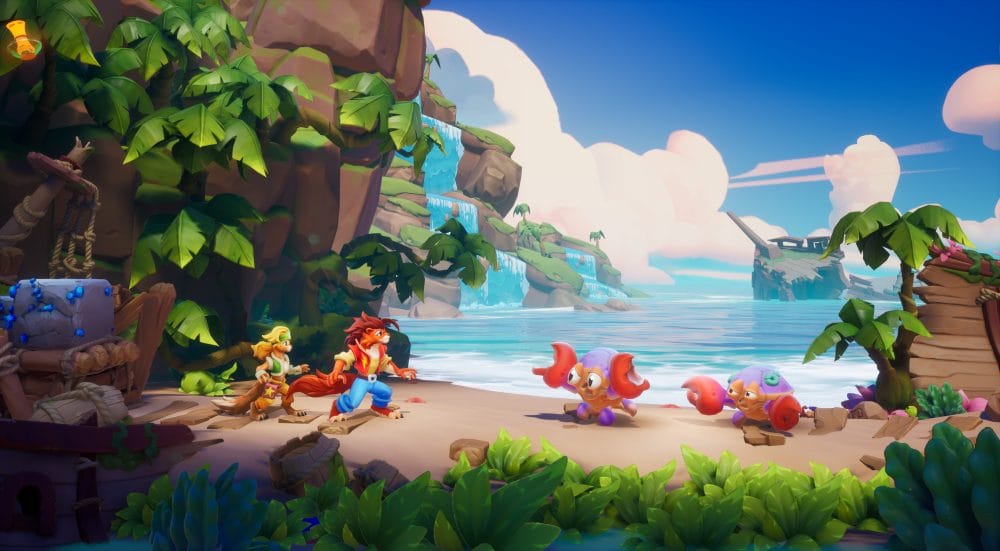
The same goes for the characters and enemies, especially the bosses. Each design is distinct, with Niko rocking a varsity jacket and the world’s largest mullet as a great example of that. It also helps to understand each enemy type, as some may not be defeated by a slide attack due to sharp quills or snapping claws. The bosses also have excellent designs, whether it is Baron Grimbald himself with his cutlass and fur collar coat, or three tiny monkeys piloting a giant mech. The whole game screams fun and somewhat silly, which works perfectly for this type of game.
The world and cast of Nikoderiko: The Magical World seem so well thought out and designed, it almost feels like discovering a foreign kids show that has been going for years. While a fair amount of the gameplay can be linked back to other IPs, I’d say that Nikoderiko has its own look and style.
Sound Design/Music
The game’s soundtrack is as sunny and lively as its visuals, with a great boss track that really got me hyped. While most tracks may not be as memorable as some we have had from other platformers, it matches the game’s energy and vibrancy, completing the audio/visual package. The sound design is also nice and sharp, with each action matched with a suitable and satisfying “smack”, “boom”, or “ding”!
One element that helps Nikoderiko: The Magical World stand apart from other platformers, like the other IPs I have mentioned, is that it has voice acting. Having Niko and Luna talk between levels, or chat with other characters, gives the game a clearer identity, even if what is being said doesn’t really offer much of interest.
Conclusion
Nikoderiko: The Magical World is the sum of its parts; some of which it has borrowed from established platformer IPs, and the rest created by the Vea Games. With the option for co-op also available, I could see Nikoderiko getting younger gamers into the genre. Overall, it makes for a polished, fun-filled, albeit familiar experience that I really enjoyed.
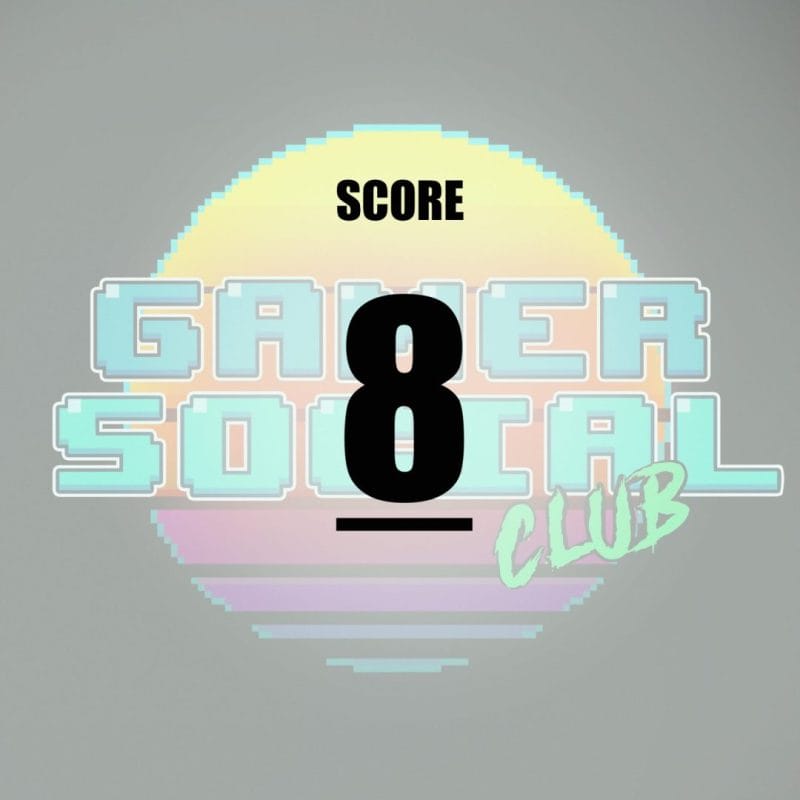
Nikoderiko: The Magical World was reviewed on PlayStation 5.
Nikoderiko: The Magical Word is available on PC, Xbox One & Series, PlayStation 4 & 5, and Nintendo Switch.
